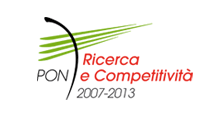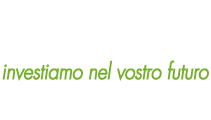Results to date: 08/07/2014
SMOB is a project on sustainable mobility which offers as a solution a platform ofvehicle poolingwhich consists of shared use of a means of transport to carry out movements from different origins to common destinations.
SMOB is asocial networkwhere the users of the same urban area can issue either a request for a lift or an offer of a lift. The systeminputsthis information andoutputsa solution with the compositions of the passengers and the routes that must be followed in order to arrive at the destination. Furthermore SMOB is therefore capable of certifying how much CO2 is saved throughvehicle pooling.
The innovative character of the project resides therefore in the integration of modules of logistical optimisation with models ofsocial networking.
The routes are also expected to be generated for vehicles in real time, thanks to the availability of informatic and telematic tools like GIS (Geographic Information System), GPS (Global Positioning System), smartphones (for which integration of the platform is envisaged through specificapps), which allow the acquisition of information in real time, used to update dynamically the vehicle routes, through solutions of georeferencing and geolocalisation of users of the system on interactive maps.
The platform can also manage public transport services on call by integrating or, in some cases, substituting traditional line services by making use of the availability of buses (or vehicles made availablead hoc) indicating the closest collection point and the time frames of availability to create and plan smart trips using the minimum journeys to satisfy all the requests of users towards a well-defined point of interest (event location, public building, etc.).
The platform'soutputwill go towards integrating a series of technological modules which will interact among themselves to offer the final user solutions to allow effective encounters between demand and supply of urban and extra-urban routes. The aim of thesocial networkis, indeed, that of connecting demand with supply among those who offer and request lifts, from different geographical destinations but towards common points of interest.
To guarantee efficient, effective and dynamic use the platform was conceived to be used eithervia webor throughmobile devices, such assmartphonesandtablets. The platform provides for the integration of the following elements:
- Logistical optimisation engine, which will provide the user with an optimum route, based on constraints of assignment, capacity, friendship and time frames, with the specific intent of reducing travel time, polluting emissions and consequently kilometres travelled.
- System ofsocial networking, which will allow the processes ofsocial ratingandreputation managementlinked to arecommender systemwhich will propose thematchingof the users based on their specific preferences.
- Module for the calculation of CO2 saved, the aim of which is that of providing, through appropriate focused calculations, the quantity of polluting emissions saved by each user and by the whole community.
- Mobileapplications, compatible with major smartphone operating systems, such as "iOS" and "Android".
At today's date, with regard to the modules described above, the logistical optimisation engine, the social networking system, and the module for the calculation of CO2 saved have been completed. Themobileapplication is currently in development. With regard to the platform, downstream of the intense initial planning phase, it is only a short distance to the first release of the platform, which provides for the integration of a good part of the functionality. By May 2014 there will be the secondreleaseand finally in July 2014 the definitive version of the technological platform will be delivered ready for thetestingphase.






 Storify
Storify twitter
twitter YouTube
YouTube



